
The Serene Splendor of Isle of Jura
Explore the Isle of Jura: A tranquil haven of rugged landscapes, fine whisky, and abundant wildlife in the heart of Scotland's Inner Hebrides.
The Isle of Jura, located off the west coast of Scotland, is a hidden gem in the United Kingdom. Known for its rugged landscapes, whisky distilleries, and abundant wildlife, it is a paradise for nature lovers and those seeking tranquility. The island's dramatic terrain includes the famous Paps of Jura, three towering mountains that dominate the skyline and offer challenging hikes with breathtaking views. Jura is sparsely populated, with only around 200 residents, providing a peaceful retreat away from the hustle and bustle of city life. Visitors can explore charming villages like Craighouse, home to the Isle of Jura Distillery, where you can sample some of the finest single malt whisky. The island's coastline is dotted with beautiful beaches and hidden coves, perfect for a quiet picnic or a leisurely stroll. Wildlife enthusiasts will be thrilled with the opportunities to spot red deer, golden eagles, and seals. Jura's rich history is also evident in its ancient sites, including standing stones and ruins that tell tales of the island's past. Whether you're an adventurer, a whisky connoisseur, or simply in need of a serene escape, the Isle of Jura offers an unforgettable experience.
Local tips in Isle of Jura
- Pack sturdy hiking boots for exploring the Paps of Jura and other trails.
- Visit the Isle of Jura Distillery for a guided tour and whisky tasting.
- Bring binoculars for birdwatching and wildlife spotting.
- Check the ferry schedules in advance as they are limited.
- Stock up on essentials before arriving; shops are few and far between.
The Serene Splendor of Isle of Jura
The Isle of Jura, located off the west coast of Scotland, is a hidden gem in the United Kingdom. Known for its rugged landscapes, whisky distilleries, and abundant wildlife, it is a paradise for nature lovers and those seeking tranquility. The island's dramatic terrain includes the famous Paps of Jura, three towering mountains that dominate the skyline and offer challenging hikes with breathtaking views. Jura is sparsely populated, with only around 200 residents, providing a peaceful retreat away from the hustle and bustle of city life. Visitors can explore charming villages like Craighouse, home to the Isle of Jura Distillery, where you can sample some of the finest single malt whisky. The island's coastline is dotted with beautiful beaches and hidden coves, perfect for a quiet picnic or a leisurely stroll. Wildlife enthusiasts will be thrilled with the opportunities to spot red deer, golden eagles, and seals. Jura's rich history is also evident in its ancient sites, including standing stones and ruins that tell tales of the island's past. Whether you're an adventurer, a whisky connoisseur, or simply in need of a serene escape, the Isle of Jura offers an unforgettable experience.
When is the best time to go to Isle of Jura?
Iconic landmarks you can’t miss
American Monument
Experience the breathtaking beauty and poignant history of the American Monument at Mull of Oa, a must-visit destination on the Isle of Islay.

Finlaggan Trust
Explore Finlaggan, the historical heart of Islay, where legends of the Lords of the Isles come to life amid stunning landscapes.
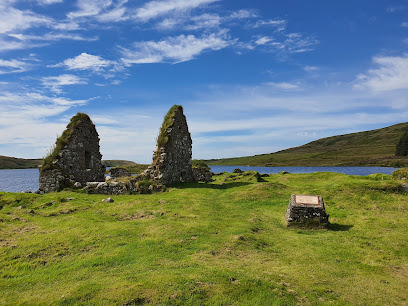
Kildalton Cross
Explore the historic Kildalton Cross on the Isle of Islay, an exquisite example of early Christian craftsmanship and Scottish heritage.
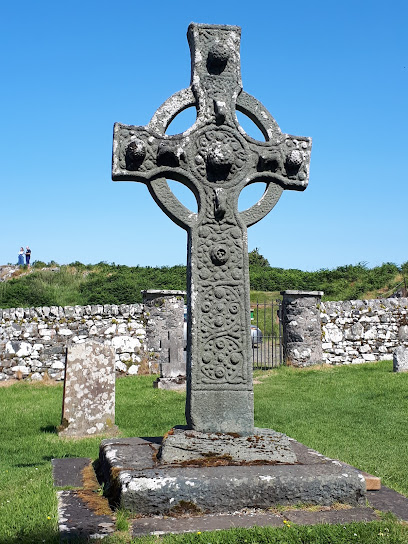
Jura
Explore the rugged beauty and rich wildlife of Isle of Jura, a serene Scottish island perfect for nature lovers and adventure seekers.
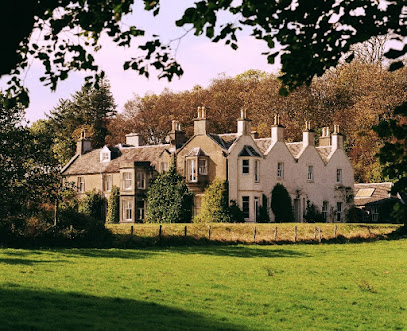
Isle of Jura Distillery Co
Explore the Isle of Jura Distillery Co, where tradition meets flavor in Scotland's scenic whisky-making paradise.
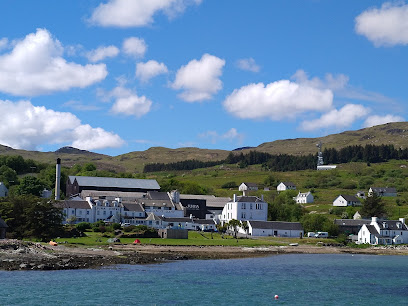
Carraig Fhada Lighthouse
Explore the stunning Carraig Fhada Lighthouse on Islay, where history meets breathtaking coastal views in Scotland's scenic landscapes.
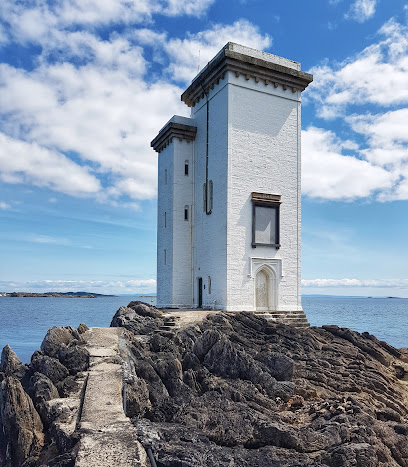
Old Kilchoman Parish Church
Explore the historical significance and serene beauty of Old Kilchoman Parish Church, a hidden gem in Islay's stunning landscapes.
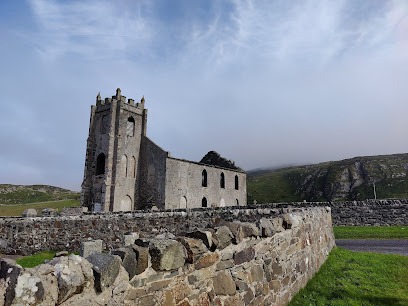
Dunyvaig Castle
Discover the historic Dunyvaig Castle on the Isle of Islay, where medieval heritage meets breathtaking coastal beauty.
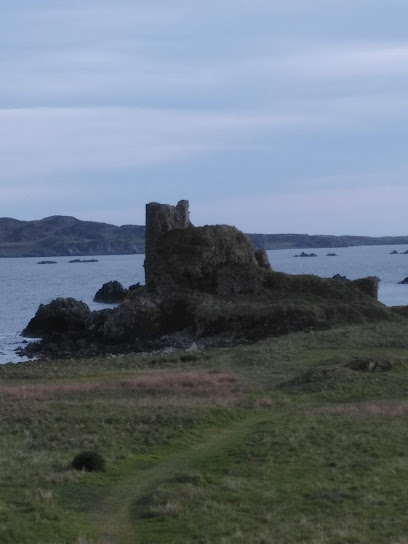
Kilnave Chapel and Cross
Discover the serene beauty and rich history of Kilnave Chapel and Cross on the Isle of Islay, a must-visit for every traveler seeking cultural immersion.

Jura Boat Tours
Experience the breathtaking beauty of Jura's waters with Jura Boat Tours—an essential adventure for every visitor exploring the Isle of Jura.
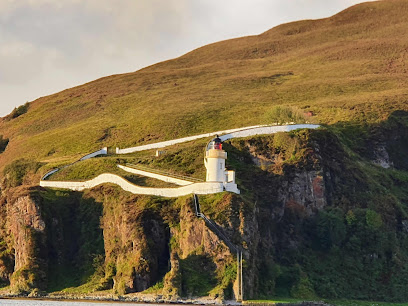
Paps of Jura
Discover the breathtaking peaks of the Paps of Jura, where nature's beauty and adventure await on the stunning Isle of Jura.
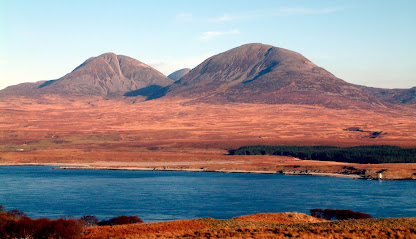
Jura Guided
Explore the stunning Isle of Jura, home to breathtaking landscapes, rich wildlife, and the iconic Paps of Jura, perfect for adventurous spirits.
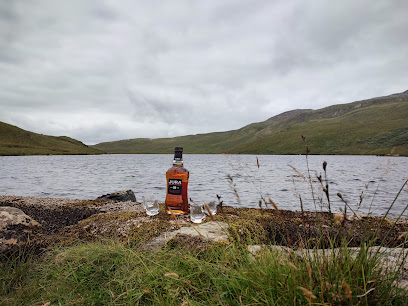
The Whisky Island Gallery & Studio
Discover the artistic spirit of the Isle of Jura at The Whisky Island Gallery & Studio, where stunning photography meets local creativity.
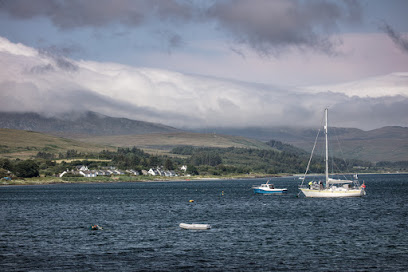
Jura View Point
Discover the mesmerizing beauty of Jura View Point on the Isle of Islay, where nature's splendor meets breathtaking panoramas and tranquility.
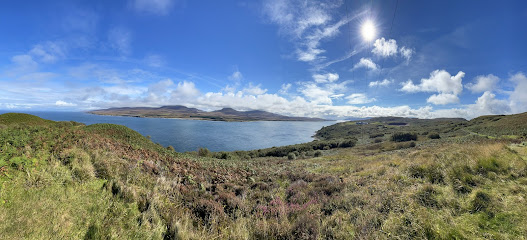
Jura Distillery
Experience the rich flavors and heritage of Jura Distillery on the Isle of Jura, where tradition meets breathtaking landscapes in every drop.
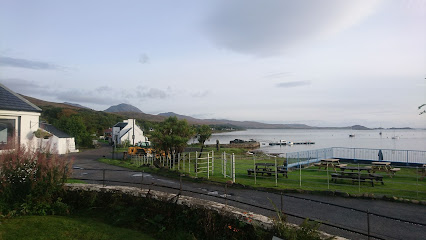
Unmissable attractions to see
Dunadd Fort
Explore the ancient Dunadd Fort, a historic fortress in Kilmartin Glen, offering stunning views and rich Scottish heritage.
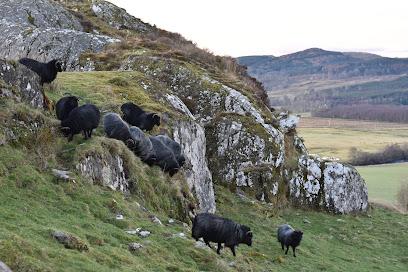
Kilchoman Distillery
Experience the unique charm of Kilchoman Distillery, a farm distillery on Islay producing exceptional single malt whisky.

American Monument
Explore the American Monument at Mull of Oa on Islay, where history meets breathtaking landscapes in a serene coastal setting.
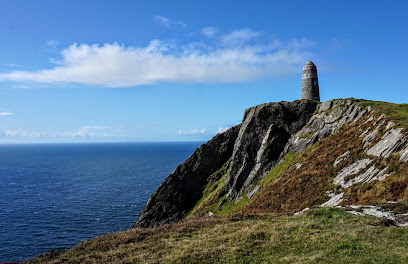
Castle Sween
Explore Castle Sween, an ancient Scottish castle rich in history, surrounded by breathtaking landscapes along the shores of Loch Sween.

RSPB Loch Gruinart, Islay
Experience the serene landscapes and rich wildlife of RSPB Loch Gruinart, Islay's premier nature reserve for birdwatching and relaxation.
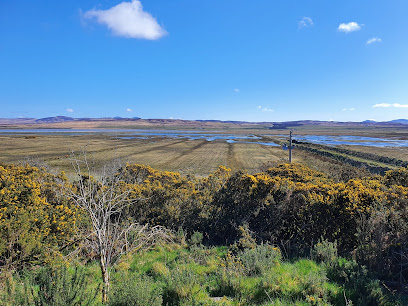
Isle of Jura Distillery Co
Experience the rich heritage of whisky making at the Isle of Jura Distillery, where tradition meets breathtaking coastal beauty.
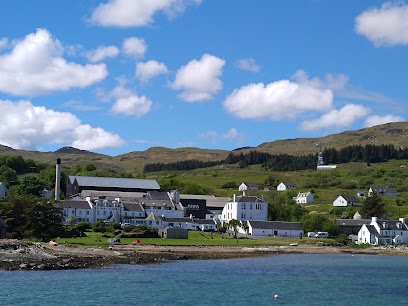
Carraig Fhada Lighthouse
Discover the breathtaking Carraig Fhada Lighthouse on Islay's scenic coast, a perfect blend of history and natural beauty.
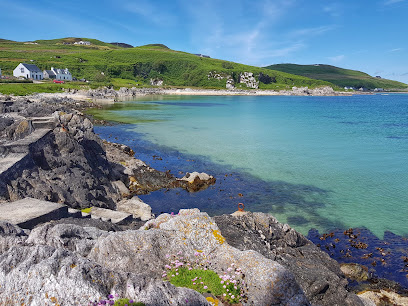
Keills Chapel
Explore the tranquil beauty and historical significance of Keills Chapel, a serene gem in Lochgilphead, Scotland, perfect for history enthusiasts and nature lovers.
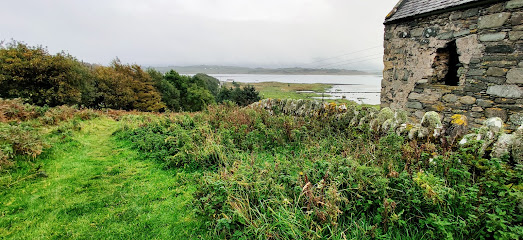
Carsaig Beach
Discover the serene beauty of Carsaig Beach in Scotland, a perfect escape for nature lovers and adventure seekers alike.
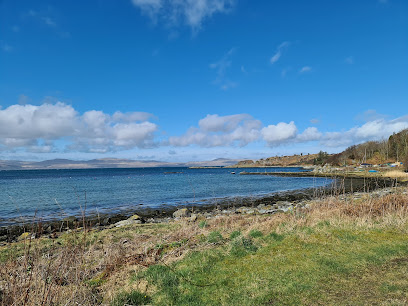
Kilmory Knap Chapel
Explore the historic Kilmory Knap Chapel, a serene escape in Lochgilphead, Scotland, steeped in rich history and stunning architecture.
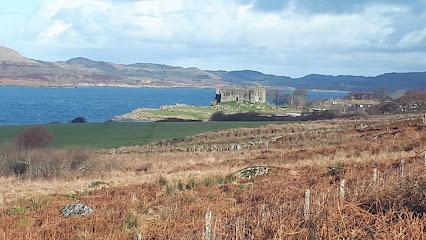
Craignish Point
Explore Craignish Point's stunning coastal views and rich wildlife in the heart of Argyll, Scotland - a perfect escape into nature's embrace.
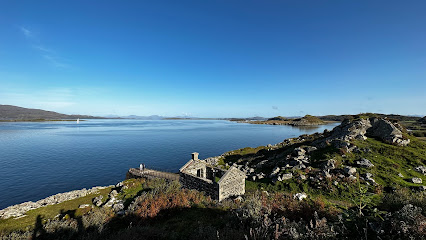
Kiloran Bay
Experience the serene beauty of Kiloran Bay in the Isle of Colonsay, a hidden gem of Scotland with stunning beaches and rich wildlife.
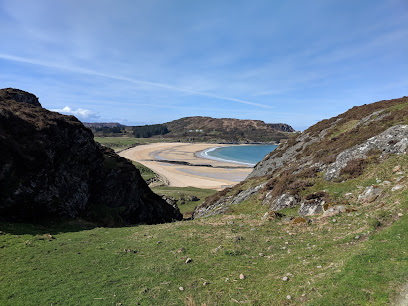
Claggain Bay
Experience the breathtaking beauty of Claggain Bay, a serene nature reserve on the Isle of Islay, perfect for relaxation and exploration.
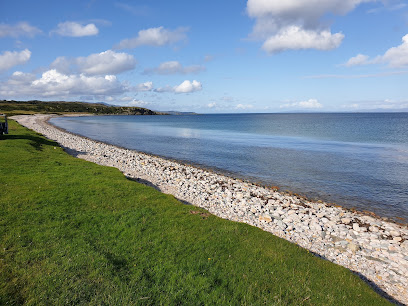
South Islay Parish: Kilarrow Church
Explore the historic Kilarrow Church in Bowmore, Isle of Islay, a serene destination blending rich history with stunning architecture.
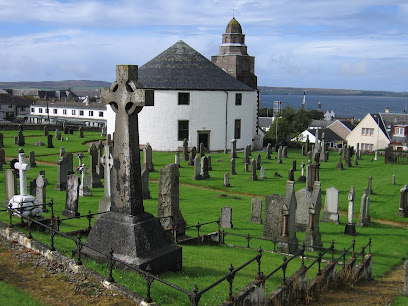
Seal Point
Explore Seal Point, a stunning coastal attraction in Tarbert, known for its breathtaking views, rich wildlife, and serene atmosphere, perfect for nature lovers.
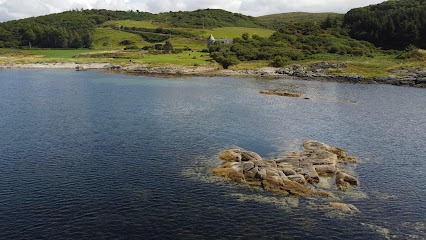
Essential places to dine
Jura Hotel
Discover serenity at Jura Hotel on Isle of Jura - your gateway to breathtaking landscapes and unforgettable experiences.

Ballygrant Inn
Experience authentic Scottish hospitality at Ballygrant Inn on the Isle of Islay - where delicious food meets cozy accommodations.
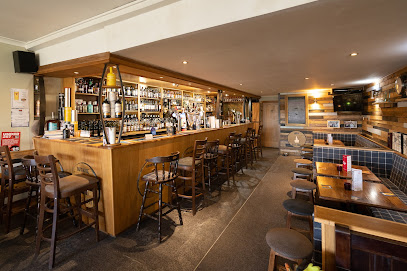
The Antlers Bistro Restaurant
Discover authentic Scottish flavors at The Antlers Bistro on Isle of Jura - where local ingredients meet breathtaking views.
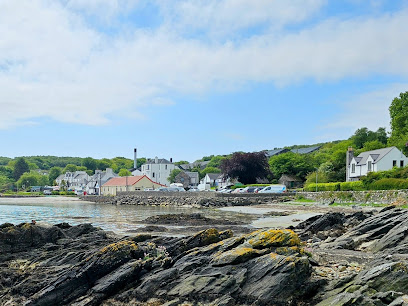
Bridgend Restaurant & Katie's Bar
Experience exquisite local cuisine and refreshing drinks at Bridgend Restaurant & Katie's Bar on the beautiful Isle of Islay.
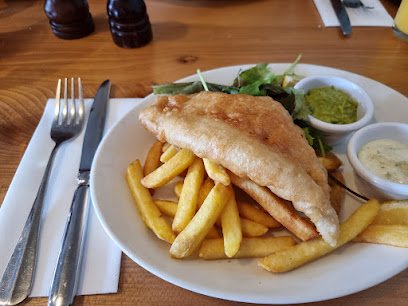
Markets, malls and hidden boutiques
Co-op Food - Islay Bowmore - Main Street
Experience the charm of Bowmore at Co-op Food, your one-stop shop for local delights and everyday essentials on the Isle of Islay.

The Celtic House
Discover unique gifts and delightful treats at The Celtic House in Bowmore, Isle of Islay - a perfect blend of shopping and café culture.
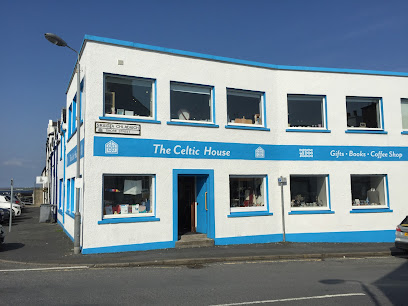
The Antlers Bistro Restaurant
Experience the flavors of Isla of Jura at The Antlers Bistro, a cozy restaurant offering local cuisine in a picturesque setting.

Port Askaig Hotel and Stores
Discover the enchanting Port Askaig Hotel and Stores, your cozy retreat on the beautiful Isle of Islay, blending local charm with essential amenities.

Craigard Kitchen of Ballygrant
Discover the cozy charm of Craigard Kitchen, a delightful coffee shop on the Isle of Islay offering artisanal brews and homemade pastries.
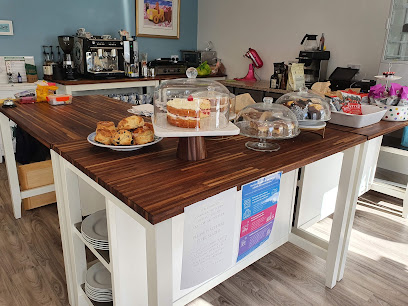
Persabus farm, Accommodation and Pottery
Experience the serene beauty of Isle of Islay at Persabus Farm, where charming accommodations meet exquisite pottery craftsmanship.

Bruichladdich Mini Market
Explore the heart of Bruichladdich with a visit to the Mini Market, your go-to convenience store and café on the stunning Isle of Islay.
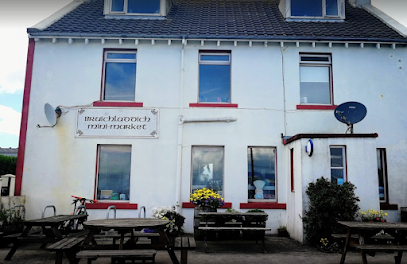
Persabus Pottery, Ceramics and Art
Explore the artistry of handcrafted ceramics at Persabus Pottery, a charming pottery shop in the scenic Isle of Islay.

The Islay Shop
Discover unique gifts and local crafts at The Islay Shop in Bowmore, a charming destination for souvenirs and artisanal treasures.
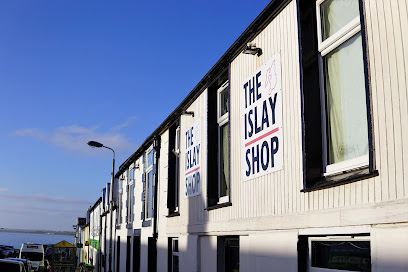
Tormisdale Croft Crafts
Explore Tormisdale Croft Crafts on Islay, where handmade treasures capture the island's rich cultural heritage and artistry.

Bridgend Shop
Discover the charm and convenience of Bridgend Shop on the Isle of Islay, your local source for essentials, local brews, and unique finds.

Co-op Food - Islay Port Ellen - Frederick Cres
Discover the best of local shopping at Co-op Food in Port Ellen, Isle of Islay – your one-stop convenience store for essentials and regional delights.
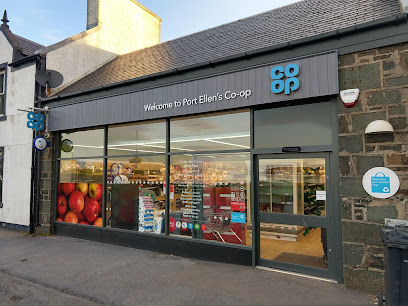
The Island Shop - Isle of Colonsay
Explore the Isle of Colonsay's charm at The Island Shop, where local goods and island culture meet in a cozy general store.
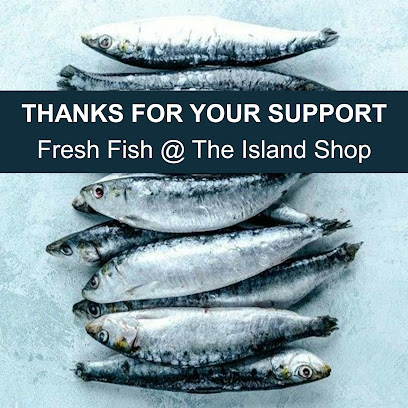
Islay Home Stores
Explore unique homewares at Islay Home Stores in Bowmore, Isle of Islay. Discover local crafts and charming gifts that capture the island's spirit.
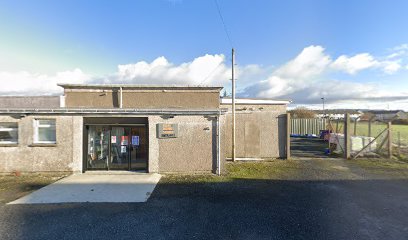
Islay Celtic Craft Shop
Explore authentic Scottish crafts at Islay Celtic Craft Shop, where local artistry and culture come together in a charming gift shop setting.
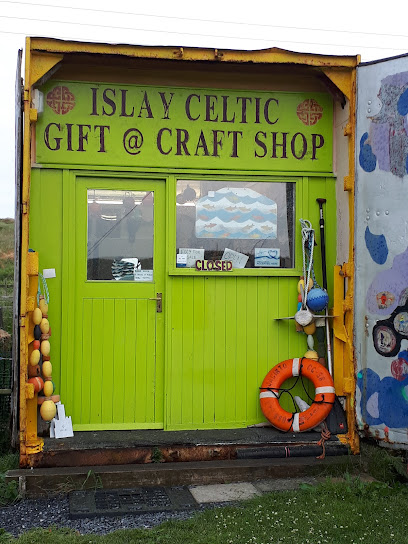
Essential bars & hidden hideouts
Peatzeria - Restaurant and Takeaway
Experience authentic Italian cuisine at Peatzeria, Bowmore's premier pizzeria, offering a cozy atmosphere and delicious dishes on the Isle of Islay.
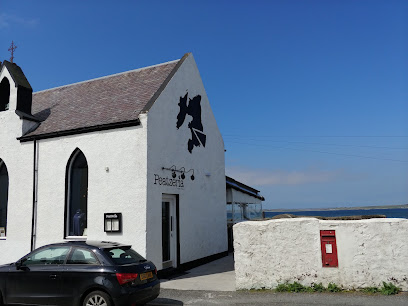
The Oyster Bar
Experience the best of coastal dining at The Oyster Bar in Oban, featuring fresh oysters and exquisite seafood dishes in a cozy setting.

The Lochside Hotel & Restaurant
Discover the charm of The Lochside Hotel & Restaurant on the Isle of Islay, where stunning views and exquisite cuisine await every traveler.
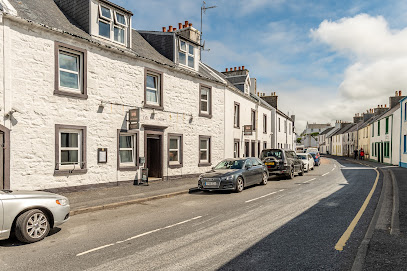
Port Charlotte Hotel
Experience the charm of Port Charlotte Hotel on the Isle of Islay, where comfort meets local culture amidst stunning coastal views.
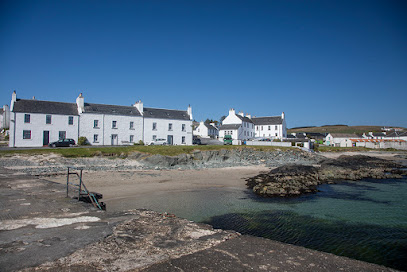
The Ardview Inn
Experience local charm and exquisite flavors at The Ardview Inn, an iconic pub on the picturesque Isle of Islay.
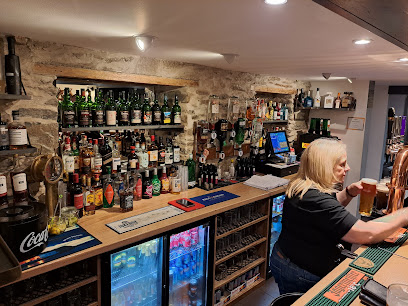
Tigh An Truish
Experience authentic Scottish cuisine and hospitality at Tigh An Truish, a charming bar and restaurant in Clachan-Seil.
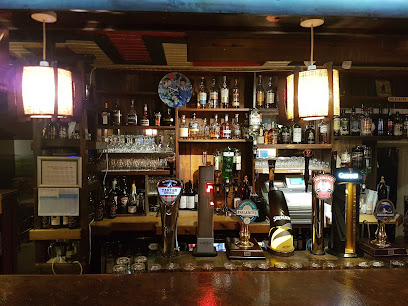
The Barn Bar
Discover the rustic charm of The Barn Bar in Lerags Glen, Oban, offering hearty meals, local brews, and a cozy atmosphere for all visitors.
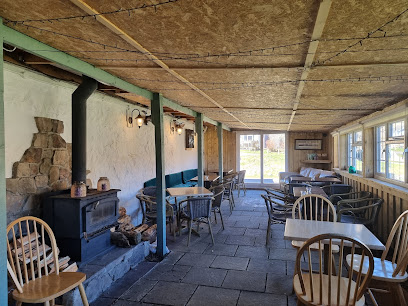
Jura Hotel
Discover the serene beauty of the Isle of Jura at the Jura Hotel, where comfort meets breathtaking landscapes for a perfect getaway.

Ballygrant Inn
Experience the warmth of Ballygrant Inn, where traditional British cuisine meets the stunning beauty of the Isle of Islay.
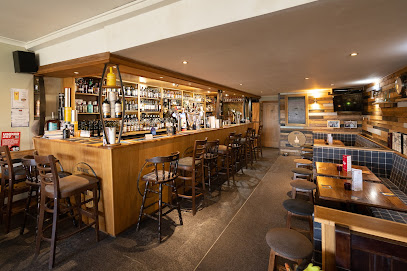
No. 1 Charlotte Street
Experience the perfect blend of comfort and local flavor at No. 1 Charlotte Street, your gateway to Islay's stunning landscapes and iconic whiskies.

The Corner House
Discover the charm of The Corner House in Tarbert, where delicious pub food and local drinks await in a cozy atmosphere.

Lochindaal Hotel
Discover the enchanting Lochindaal Hotel in Port Charlotte, where local culture meets cozy accommodations and stunning views of the Isle of Islay.
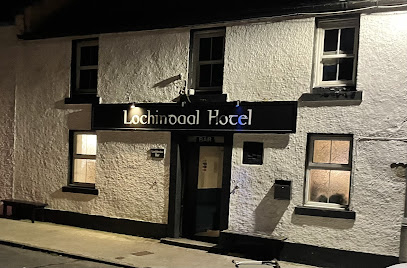
The Antlers Bistro Restaurant
Experience the best of Isle of Jura dining at The Antlers Bistro, where local flavors and artisanal coffee meet stunning views.
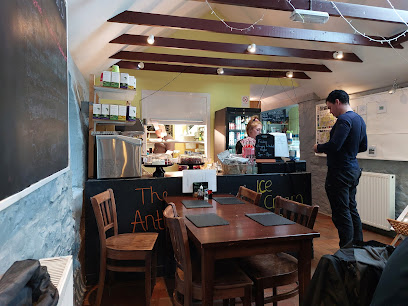
Lussa Gin
Experience the enchanting world of artisanal gin at Lussa Gin, nestled in the stunning landscapes of the Isle of Jura.
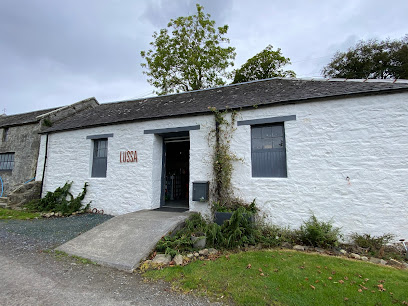
An Tigh Seinnse
Discover the heart of Portnahaven at An Tigh Seinnse, a charming pub offering local delicacies and a warm atmosphere on the stunning Isle of Islay.
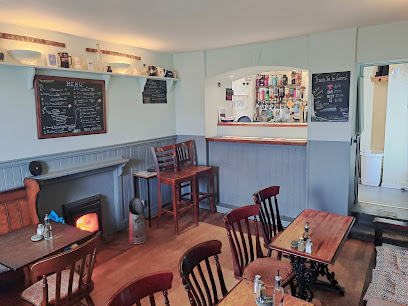
Local Phrases about Isle of Jura
-
- HelloHallo
[ha-lo] - GoodbyeBàrrachd leat
[ba-rach le-at] - YesTha
[ha] - NoChan eil
[chan el] - Please/You're welcomeToilichte
[toi-likh-te] - Thank youTapadh leat
[ta-pa le-at] - Excuse me/SorryM'fhaicinn
[m-ai-kin] - How are you?Ciamar a tha thu?
[ki-mar a ha hu] - Fine. And you?Math. Agus thu?
[mah. a-gus hu] - Do you speak English?A bheil Gàidhlig agad?
[a vel ga-li-lik agad] - I don't understandChan eil mi a' tuigsinn
[chan el mi a tu-ik-sin]
- HelloHallo
-
- I'd like to see the menu, pleaseBu toil leam am mheanu, mas e do thoil e
[bu to-lik lum am vee-an-oo mas e do hul e] - I don't eat meatChan ith mi feòil
[chan ith mi fe-ol] - Cheers!Slàinte mhath!
[slan-cha va] - I would like to pay, pleaseBu toil leam pàigheadh, mas e do thoil e
[bu to-lik lum pa-ee-ee ma-se do hul e]
- I'd like to see the menu, pleaseBu toil leam am mheanu, mas e do thoil e
-
- Help!Cobhair!
[ko-war] - Go away!Falbh air falbh!
[fal-av er fal-av] - Call the Police!Cuimhnich air an t-Siorrachd!
[ku-vee-ich er an te-she-or-rach] - Call a doctor!Cuimhnich air dotair!
[ku-vee-ich er do-ter] - I'm lostTha mi air chall
[ha mi er khal] - I'm illTha mi tinn
[ha mi tin]
- Help!Cobhair!
-
- I'd like to buy...Bu toil leam ceannach...
[bu to-lik lum can-ach] - I'm just lookingTha mi a' coimhead
[ha mi a ko-yim] - How much is it?Cia mheud tha sin?
[ki-a ve-oot ha shin] - That's too expensiveTha sin ro dhaor
[ha shin ro yaor] - Can you lower the price?Am faod thu an t-suim a ìseal?
[am faod hu an tu-im a ees-al]
- I'd like to buy...Bu toil leam ceannach...
-
- What time is it?Dè an t-àm a th' ann?
[de an tam a ha an] - It's one o'clockTha e aon uairean
[ha e een oo-ar-an] - Half past (10)Leath air
[lay-ar] - MorningMadainn
[ma-dan] - AfternoonFeasgar
[fes-gar] - EveningFeasgar
[fes-gar] - YesterdayAn-dè
[an-de] - TodayAn-diugh
[an-ju] - TomorrowA-màireach
[a-ma-re-ach] - 1Aon
[een] - 2Dà
[da] - 3Trì
[tree] - 4Ceithir
[ke-er] - 5Còig
[ko-ik] - 6Sia
[she-a] - 7Seachd
[shachk] - 8Ochd
[ochk] - 9Naoidh
[nee] - 10Deich
[dech]
- What time is it?Dè an t-àm a th' ann?
-
- Where's a/the...?Càite tha a'...
[ka-tche ha a] - What's the address?Dè an seòladh?
[de an sho-la] - Can you show me (on the map)?Am faod thu sealladh dhomh (air a' mhapa)?
[am faod hu shal-av dom (ar a va-pa)] - When's the next (bus)?Cuin a thèid an ath (bus)?
[kwin a hee an ah (bus)] - A ticket (to ....)Ticead (gu ....)
[ti-kat (go)]
- Where's a/the...?Càite tha a'...
History of Isle of Jura
-
The Isle of Jura boasts a rich tapestry of human history dating back to the Mesolithic era. Archaeological finds, such as shell middens and stone tools, suggest that the island was inhabited over 8,000 years ago. The early settlers were likely drawn by the island's abundant natural resources, including its fertile land and rich marine life.
-
During the early Middle Ages, the Isle of Jura, like much of the Hebrides, fell under Norse control. The island's name is derived from the Old Norse 'Dyrøy,' meaning 'Deer Island,' reflecting the Norsemen's significant impact on local culture and language. Jura was part of the Kingdom of the Isles, a maritime kingdom that included the Hebrides and the Isle of Man, and flourished under Norse rule until the 13th century.
-
In the medieval period, the Isle of Jura came under the control of the Maclean and Campbell clans. The Macleans of Duart held sway over the island for several centuries, engaging in frequent skirmishes with rival clans. By the late 16th century, the Campbells of Craignish had established dominance, with the island becoming a part of the extensive Campbell estates. The clan conflicts and alliances played a crucial role in shaping Jura's social and political landscape.
-
The 18th and 19th centuries were a time of significant upheaval for Jura's inhabitants due to the Highland Clearances. Landowners, seeking to increase their profits, evicted tenant farmers to make way for large-scale sheep farming. This led to a dramatic decline in the island's population, as many residents were forced to emigrate to the Lowlands or overseas. The Clearances left a lasting impact on Jura's demographic and cultural landscape.
-
In the mid-20th century, the Isle of Jura gained literary fame through George Orwell, who sought refuge on the island to work on his seminal novel, '1984'. Orwell resided at Barnhill, a remote farmhouse on the northern tip of Jura, from 1946 to 1949. Despite his frail health, he found the island's isolation ideal for writing, and it was here that he completed his dystopian masterpiece. Today, Barnhill remains a point of pilgrimage for literary enthusiasts.
-
In recent decades, Jura has seen a resurgence in population and interest, balancing its rich heritage with modern developments. The island is renowned for its single malt whisky, with the Jura Distillery established in 1810 and revitalized in the 1960s. The local community continues to celebrate traditional music, crafts, and festivals, while also embracing sustainable tourism and renewable energy projects, ensuring that Jura remains a vibrant and resilient island.
Isle of Jura Essentials
-
The Isle of Jura is located in the Inner Hebrides of Scotland. The most common way to reach Jura is by taking a ferry from Kennacraig on the Scottish mainland to the neighboring island of Islay, and then another short ferry ride from Port Askaig on Islay to Jura. You can also take a small plane from Glasgow to Islay and then proceed by ferry. It’s advisable to book ferry tickets in advance, especially during the tourist season.
-
Once on the Isle of Jura, the most practical way to get around is by car. There is a single main road that runs from the south to the north of the island. Car rentals are available, but it's best to arrange this in advance. Alternatively, cycling is a popular option due to the scenic landscapes. Public transport is limited, but there is a community bus service that operates on the island.
-
The local currency is the British Pound Sterling (GBP). Credit and debit cards are widely accepted, but it's a good idea to carry some cash for smaller establishments and remote areas. There is a single ATM on the island located at the Jura Hotel in Craighouse, so make sure you have enough cash before traveling to more remote parts of the island.
-
The Isle of Jura is generally very safe for tourists. Crime rates are extremely low, and there are no specific areas with high crime targeting tourists. However, as always, it's wise to take standard precautions such as locking your vehicle and not leaving valuables unattended. The island's remote nature means that medical facilities are limited, so it's essential to have travel insurance that covers medical emergencies.
-
In case of an emergency, dial 999 for immediate assistance. There is a small medical center in Craighouse that can handle minor health issues. For more serious medical emergencies, evacuation to the mainland may be necessary. It’s recommended to carry a basic first aid kit and any necessary medications. Familiarize yourself with the location of the nearest medical facilities and emergency contacts upon arrival.
-
Fashion: Do wear practical clothing suitable for outdoor activities and variable weather conditions. Layers and waterproofs are advisable. Religion: Do respect local customs and traditions, although the island is not particularly religious. Public Transport: Do plan your transportation in advance as public transport options are limited. Greetings: Do greet locals with a friendly 'hello' or 'hi'. Islanders are known for their hospitality. Eating & Drinking: Do try local specialties like Jura whisky. Don’t forget to book in advance if you plan to dine at the limited number of restaurants.
-
To experience Jura like a local, visit the Jura Distillery in Craighouse and take a tour to learn about the island's famous whisky. Engage with the locals, who are known for their friendliness and willingness to share stories. Explore the island’s natural beauty by hiking the Paps of Jura or taking a boat trip to see the abundant wildlife, including red deer and seals. Don’t miss the opportunity to visit the isolated and historic Jura House Gardens.
Trending Landmarks in Isle of Jura
Nearby Cities to Isle of Jura
-
Things To Do in Stirling
-
Things To Do in Derry
-
Things To Do in Belfast
-
Things To Do in Edinburgh
-
Things To Do in Dundee
-
Things To Do in Kirk Michael
-
Things To Do in Ramsey
-
Things To Do in Peel
-
Things To Do in Inverness
-
Things To Do in Laxey
-
Things To Do in Onchan
-
Things To Do in Douglas
-
Things To Do in Port Erin
-
Things To Do in Port St Mary
-
Things To Do in Ballasalla











